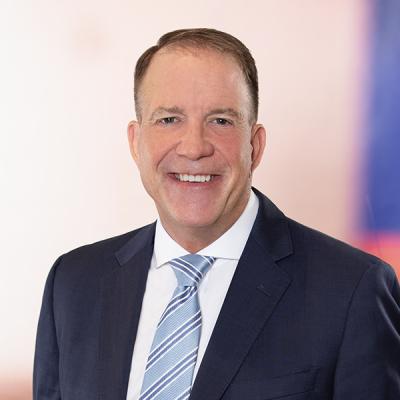November Energy, Sustainability, and Infrastructure Washington Update
As Washington wrestles with gridlock and a government shutdown, the energy, sustainability, and infrastructure sectors continue to surge forward — driven by shifting political currents, new financing tools, and intensifying global competition. From sweeping project terminations at DOE to the rebranding of the Loan Programs Office under the banner of “Energy Dominance,” this month underscores both disruption and opportunity. Meanwhile, Congress and the Trump administration are redefining America’s role in critical minerals, fusion energy, and infrastructure resilience, signaling that even amid fiscal uncertainty, the race to secure the nation’s energy future has never been more dynamic.
Clean Energy Projects Termination
On October 2, the Department of Energy (DOE) announced the termination of 223 projects totaling more than $7.5 billion across multiple program offices, including Clean Energy Demonstrations (OCED), Energy Efficiency and Renewable Energy (EERE), Grid Deployment (GDO), Manufacturing and Energy Supply Chains (MESC), ARPA-E, and Fossil Energy (FE).
While many of the cuts appear to target projects in blue states, they have also sparked frustration among Republican lawmakers. Over two dozen electricity grid improvement initiatives — some aimed at adding new power capacity — were canceled, fueling concerns about potential increases in electricity prices.
Reports also indicate internal disagreements within DOE leadership over many of the project cuts, with the result that Undersecretary of Energy Wells Griffith was replaced on an acting basis by Alex Fitzsimmons, who is also serving as the Director of the Office of Cybersecurity, Energy Security, and Emergency Response.
The fate of the remaining $22 billion in DOE-funded projects, many of which would benefit Republican-leaning regions, remains uncertain.
Critical Minerals
New International Initiatives
On October 23, the US International Development Finance Corporation (DFC) launched a Critical Mineral Consortium (CMC) with Orion Resource Partners and the Abu Dhabi–based ADQ, committing $1.8 billion toward a targeted $5 billion fund to finance mineral projects in emerging markets. The initiative aims to strengthen allied supply chains through investment, offtake management, domestic processing, and technology scaling.
Following China’s restrictions on rare earth exports, US officials signaled plans to expand investment in African mining and refining operations. Wayne Wall, Senior Director for Middle East and Africa Affairs at the National Security Council, said the administration aims to leverage financing from the DFC and Export-Import Bank (EXIM) to offer African nations an alternative to Chinese-backed infrastructure and mining deals.
In Congress, the Senate Foreign Relations Committee advanced an amended version of the bipartisan Critical Minerals Partnership Act (S. 2550), sponsored by Senators John Curtis (R-UT) and Jeanne Shaheen (D-NH). The bill authorizes $50 million for FY2026 to bolster global mineral supply chain security, empower the State Department’s Minerals Security Partnership to coordinate investments, and support the creation of a database of critical mineral projects to attract private-sector participation. It further underscores governance standards, recycling, joint financing, and risk insurance mechanisms for mining ventures.
US-Australia Critical Minerals Alliance and Investments
Complementing these efforts, the United States and Australia agreed on October 20 to a nonbinding framework to deepen cooperation in critical minerals mining, processing, and supply. Each country pledged at least $1 billion in new project financing to secure mineral supply chains vital to clean energy and defense. The agreement also establishes a joint response group to identify vulnerabilities and expedite mineral deliveries. Simultaneously, EXIM announced seven letters of interest totaling more than $2.2 billion to advance US critical minerals projects in Australia, including rare earth elements, graphite, magnesium, titanium, and scandium. Six of the seven projects are being pursued in partnership with Export Finance Australia (EFA) under the EXIM-EFA “Single Point of Entry” framework, demonstrating allied cooperation to counter China’s export dominance and ensure Western supply-chain resilience.
Critical Minerals Investment and Project Approval
Earlier in October, the White House announced that the Department of War would take a 10% equity stake in Trilogy Metals, a Vancouver-based mining company with claims in northwest Alaska. The Department of the Interior also reissued right-of-way permits for the Ambler Road project — a 211-mile corridor designed to unlock access to Alaska’s mineral deposits. Both actions were framed as advancing national security and revitalizing domestic mining capacity to reduce US dependence on China.
Also, at the beginning of November, Vulcan Elements announced a $1.4 billion partnership with the U.S. government and ReElement Technologies to establish a fully domestic, vertically-integrated rare-earth magnet supply‐chain capable of producing 10,000 metric tons annually and recycling end-of-life magnets and e-waste. Subject to due diligence and final agreement, the financing structure includes a $620 million direct loan from the Office of Strategic Capital and $50 million of federal incentives via the CHIPS and Science Act. This marks the first time CHIPS Act authority has been used to support critical-minerals or rare earth investment, underscoring a strategic shift toward domestic supply-chain security for magnets used in advanced defense and non-defense sectors.
LPO Is Now the Energy Dominance Financing Program
On October 16, Secretary Chris Wright announced that the DOE’s Loan Programs Office (LPO) has been rebranded as the Energy Dominance Financing (EDF) Program, keeping with the new authority granted in the One Big Beautiful Bill Act (OBBBA) passed in July. Its first project under this new designation — a $1.6 billion loan guarantee to an American Electric Power (AEP) subsidiary — will fund the reconductoring and rebuilding of approximately 5,000 miles of transmission lines across Indiana, Michigan, Ohio, Oklahoma, and West Virginia.
Secretary Wright indicated that the administration will continue utilizing the EDF for projects originally proposed under the Biden administration, noting, “As we’re reviewing these things, of course, not all of them were nonsense.” While not the strong words of support all applicants were looking for, this shows that the EDF Program (formerly LPO) is open for business, a good sign for projects that align with the administration’s objectives.
Following Secretary Wright’s announcement, DOE issued an Interim Final Rule amending DOE’s loan guarantee regulations to implement the Energy Dominance Financing provisions of the OBBBA, which amended Section 1706 to authorize the Secretary of Energy to guarantee loans of up to a total principal amount of $250 billion through September 30, 2028. The rule replaces the Energy Infrastructure Reinvestment (EIR) framework established under the Inflation Reduction Act with a significantly broader lending authority and mandate, revising Part 609 to define “energy infrastructure” to mean “a facility, and associated equipment, used for enabling the identification, leasing, development, production, processing, transportation, transmission, refining, and generation needed for energy and critical minerals.” DOE is also revising Part 609 to reflect OBBBA’s elimination of the application requirement to “include an analysis of how the proposed project will engage with and affect associated communities.” DOE is providing a comment period until December 29, 2025.
Federal Regulatory Commission (FERC)
On October 23, the Energy Secretary invoked a rarely used provision of the Department of Energy Organization Act, directing the Federal Energy Regulatory Commission (FERC) to initiate a preliminary Advance Notice of Proposed Rulemaking on reforms to improve the timeliness and efficiency of interconnecting large energy loads to the transmission grid. Read more about this update from our Mintz colleagues here.
Meanwhile, the Trump administration officially appointed Laura Swett as FERC Chair on October 20, following her swearing-in ceremony. Swett’s elevation, which follows the White House’s earlier push for former Democratic Chair Willie Phillips to resign, gives Republicans a majority on the Commission and renews scrutiny of FERC’s political independence.
Fusion Commercialization Roadmaps
A number of studies outlining the path and impact of fusion commercialization were rolled out during the month. On October 16, DOE’s Office of Science released its Fusion Science & Technology Roadmap, outlining a federal strategy to build the infrastructure and partnerships necessary for commercial fusion energy scale-up in the 2030s. The Roadmap identifies 10 key actions across three pillars — Build, Innovate, and Grow — focused on closing gaps in materials and technology, advancing scientific research, and expanding the US fusion ecosystem through public-private and international collaboration. The Special Competitive Studies Project (SCSP)–led Commission on the Scaling of Fusion Energy also released their culminating report, “Fusion Forward: Powering America’s Future,” underscoring the imperative to declare fusion energy a national security priority, expand fusion leadership, and inject $10 billion to drive commercialization.
Mintz and ML Strategies continue to play an active role in this space, supporting the launch of Catalyzing California’s Fusion Advantage: Roadmap to Commercialization, a study led by General Atomics and released by the San Diego Regional Economic Development Corporation (EDC). The report examines the economic potential and growth trajectory of California’s emerging fusion energy sector.
Conclusion
ML Strategies continues to closely monitor the policy areas outlined above, along with broader developments in the energy sector. We welcome the opportunity to connect. Please feel free to reach out with any questions or to explore potential opportunities.




